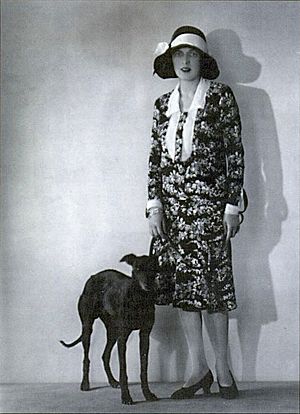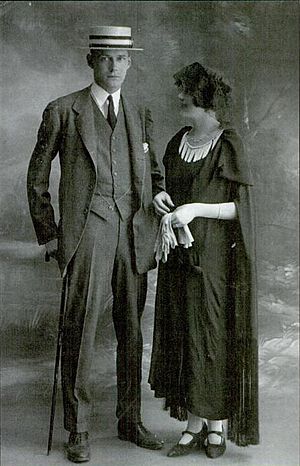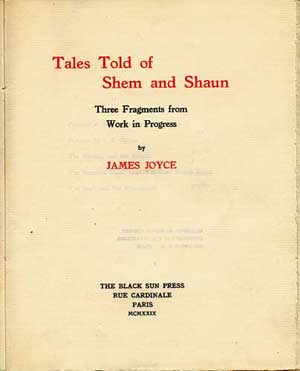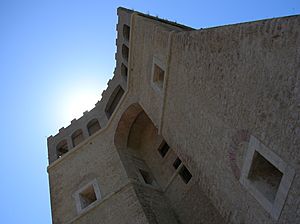Caresse Crosby facts for kids
Quick facts for kids
Caresse Crosby
|
|
|---|---|

Caresse Crosby and her whippet, Clytoris
|
|
| Born |
Mary Phelps Jacob
April 20, 1892 New York City, U.S.
|
| Died | January 24, 1970 (aged 78) Rome, Italy
|
| Nationality | American |
| Other names | Polly Jacob, Polly Peabody |
| Occupation | Publisher, activist, writer |
| Known for | Inventor of the modern bra Co-founder, Black Sun Press |
|
Notable work
|
Portfolio: An Intercontinental Quarterly |
| Spouse(s) |
Richard R. Peabody
(m. 1915; div. 1922)Selbert Young
(m. 1937; div. 1939) |
| Children | 2 |
Caresse Crosby (born Mary Phelps Jacob; April 20, 1892 – January 24, 1970) was an American inventor, publisher, and supporter of the arts. She is famous for inventing the modern bra. Caresse and her second husband, Harry Crosby, started the Black Sun Press. This publishing house helped many writers who later became very well-known, such as Ernest Hemingway and Anaïs Nin. She was like a "literary godmother" to many American writers living in Paris after World War I.
Contents
Early Life and Education
Mary Phelps Jacob was born on April 20, 1891, in New Rochelle, New York. She was the oldest daughter of William Hearn Jacob and Mary Phelps. Her family called her "Polly" to tell her apart from her mother.
Polly grew up in a comfortable home. She once said that "only good smells existed" in her childhood. She also mentioned that "what I wanted usually came to pass." This shows she had a privileged upbringing.
She attended several schools, including Miss Chapin's School in New York City. She also boarded at Rosemary Hall, a prep school in Wallingford, Connecticut. There, she acted in a play called As You Like It and received praise for her performance. She graduated from Rosemary Hall in 1910.
Marriages and New Beginnings

In 1915, Mary (Polly) married Richard R. Peabody. They had two children together. Later, she met Harry Crosby in 1920. Harry was seven years younger than her.
In 1922, Polly and Richard divorced. Soon after, Harry and Polly got married. They moved to Europe and became part of the "Lost Generation" of American writers and artists living abroad. They enjoyed a free-spirited lifestyle. In 1924, Polly changed her name to Caresse, which Harry suggested.
In 1925, they started publishing their own poetry. They called their first publishing venture Éditions Narcisse. In 1927, they changed the name to the Black Sun Press.
After Harry's death in 1929, Caresse returned to the United States in 1936. She married Selbert Young, an actor, but they later divorced. Caresse then moved to Washington, D.C. She became an activist and founded an organization called Women Against War. She also worked to create a center for world peace in Delphi, Greece.
Publishing New Writers
Caresse and Harry Crosby started their publishing journey by printing Caresse's own poetry. Her first book, Crosses of Gold, came out in 1924. In 1926, she published Graven Images through another company.
In April 1927, they officially founded their own publishing company, Éditions Narcisse. They named it after their black whippet dog, Narcisse Noir. They used their press to publish their own poems in beautiful, limited-edition books. Their first book was Caresse's Painted Shores.
In 1928, they changed the company's name to the Black Sun Press. This name reflected Harry's interest in the sun as a symbol of both life and death. The Black Sun Press quickly became known for its high-quality books. They used the best paper and inks, and their books were printed perfectly.
The press became very important in Paris during the 1920s and 1930s. They published early works by many avant-garde (new and experimental) writers before they became famous. These writers included James Joyce, Kay Boyle, Ernest Hemingway, and D. H. Lawrence. For example, they published Joyce's Tales Told of Shem and Shaun, which later became part of his famous book Finnegans Wake.
After Harry's death, Caresse continued to run the Black Sun Press until 1936. She then moved back to the United States. The press officially closed when Caresse passed away in 1970.
Crosby Continental Editions
After Harry died, Caresse started a new publishing project called Crosby Continental Editions. She wanted to publish paperback books, which were not very popular yet. Her friend Ernest Hemingway offered her one of his books to publish. Caresse chose The Torrents of Spring.
She published nine more books in 1932, including William Faulkner's Sanctuary. However, American publishers were not interested in distributing her paperbacks. They didn't believe people would buy them. So, Caresse closed this new press in 1933.
Publishing Portfolio
Caresse also published a magazine called Portfolio: An Intercontinental Quarterly under the Black Sun Press name. She wanted to keep working with young and experimental writers and artists. She published six issues of Portfolio.
The magazine featured works from many famous artists and writers, such as Albert Camus, Henri Matisse, Henry Miller, and Pablo Picasso. She printed 1,000 copies of each issue. Some special deluxe copies even included original artwork. After the sixth issue, she ran out of money and sponsors, and this was her last major publishing effort.
Later Life and Activism
After Harry's death, Caresse continued to pursue her interests. She appeared as a dancer in two short experimental films in the early 1930s. She also wrote her autobiography, The Passionate Years, which was published in 1953.
Caresse became very active in politics. She founded "Women Against War" and "Citizens of the World." These groups promoted the idea of a "world community." She tried to create a world citizen's center in Delphi, Greece. She bought a small house there in 1942. However, Greek authorities did not allow her to visit her property in 1952, believing she was "dangerous."
When her plan for Greece failed, she tried to create a "World Man Center" in Cyprus. This center would have included a special dome designed by Buckminster Fuller. This effort also did not work out.
Supporting Artists
In 1949, Caresse visited a large, old castle in Italy called Castello di Rocca Sinibalda. It was about 70 kilometers north of Rome. The castle was built between 1530 and 1560. In the 1950s, she rented it, and later bought it for $2,600. The purchase also came with the title of Principessa (Princess).
Caresse paid to bring electricity to the castle and the nearby village. She used the castle to support various artists. She held poetry seminars there. Writer Henry Miller described Rocca Sinibalda as a "Center for Creative Arts and Humanist Living." Many artists visited the castle, some for a weekend, others for a whole season.
In 1962, a filmmaker named Robert Snyder made a documentary about Caresse and her plans for the castle. The film, called Always Yes, Caresse, showed Caresse giving a tour of the castle. Caresse divided her time between the castle, her home in Virginia, and apartments in Washington, D.C., New York City, and Rome. She put Rocca Sinibalda up for sale shortly before she died.
Death and Legacy
Caresse Crosby died in Rome, Italy, on January 24, 1970, at the age of 78. She passed away from complications related to pneumonia.
Her invention, the modern bra, became a standard undergarment for women around the world. Her papers and writings are kept at Southern Illinois University. They include over 1,600 photographs from her life.
In 2004, a movie company bought the rights to a screenplay about Harry and Caresse.
Works
As author
- Crosses of Gold Éditions Narcisse, Paris, 1925
- Graven Images, Houghton Mifflin, Boston, 1926
- Painted Shores Black Sun Press, Paris, 1927
- The Stranger Black Sun Press, 1927
- Impossible Melodies Black Sun Press, 1928
- Poems for Harry Crosby Black Sun Press, 1930
- The Passionate Years Dial Press, 1953
As editor
- Portfolio: An Intercontinental Quarterly Six editions, Washington, D. C.
Images for kids
-
Nantasket Beach and the Nantasket Hotel, State Bath House and Paragon Park in the background, circa 1910.
See also
 In Spanish: Caresse Crosby para niños
In Spanish: Caresse Crosby para niños





